Safe Speed on the Water: Guide to Boat Speed Limits
Boat speed limits vary widely throughout the United States, not only between states but also within states. The appropriate speed for boating depends on location (specific bodies of water have unique limits), the time of day, and how close you are to shore or other vessels. It can also depend on the type of boat, the operator’s level of experience, and the weather.
Boating speed limits are often set by local authorities and can change frequently. It’s important to check current local regulations before operating a pleasure craft in unfamiliar waters.
Let’s take a look at some general guidelines to follow when determining if a speed is safe for your boat, and a few state-specific examples.
General guidelines for choosing a safe speed
Overall, a safe speed for your boat is one that allows you to maintain control, avoid collisions, and stop within an appropriate distance.
The United States Coast Guard navigation rules stipulate that:
Every vessel shall at all times proceed at a safe speed so that she can take proper and effective action to avoid collision and be stopped within a distance appropriate to the prevailing circumstances and conditions. (United States Department of Homeland Security, United States Coast Guard, Navigation Rules. Page 14.)
When choosing a speed, consider the following:
Environmental conditions
- Visibility: Reduce speed in fog, mist, rain, or darkness.
- Weather: Wind speed, wave height, and overall conditions affect safe operating speeds.
- Water conditions: Consider currents, tides, and water depth.
Traffic and surroundings
- Traffic density: Adjust your speed based on the presence of other vessels, especially in areas with high boat traffic or fishing vessels.
- Proximity to shore: Many areas require reduced speeds (often 10 km/h) within 30 meters of shore.
- Navigational hazards: Be aware of obstacles like rocks, tree stumps, or shallow areas.
Vessel characteristics
- Maneuverability: Consider your boat’s stopping distance and turning ability.
- Size and type: Larger vessels may require lower speeds for safe operation.
- Engine power and propeller type: These affect your boat’s speed capabilities and handling.
Personal factors
- Operator experience: Your skill level should influence your speed choices.
- Ability to react: Maintain a speed that allows you to avoid collisions.
You must also obey any posted limits or restrictions in the area.
State-Specific Examples
There are different rules and regulations to follow, depending on where in the U.S. you are operating your vessel. It’s important to note that even in areas without specific posted limits, s boaters are required by law to operate at speeds that are reasonable and prudent based on current local conditions to keep people and property free from harm.
Let’s take a quick look at the boat speed rules for California, Florida and New York.
Boating speed limits in California
- 5 mph speed limit within 200 feet of swimming areas, diving platforms, passenger landings, or areas where vessels are moored.
- 5 mph limit within 100 feet of swimmers.
- 5 mph limit within 1,000 feet of the oceanfront coastline of San Diego.
- 5 mph limit on Mission Bay from sunset to sunrise.
- “Slow, no wake speed” is required within posted “No Wake” areas. Your wake can damage property, people and other vessels if you are operating a too high a speed.
These are just a few of the local rules in California. Local municipalities may impose additional speed restrictions in certain areas. For example, some areas have designated speed limits of 5 mph or less, including near bridges and within 100 feet of shore or another vessel.
Florida pleasure craft speed rules
Florida uses different types of speed zones to regulate boat traffic:
- Idle Speed, No Wake Zone: Vessels must operate at the minimum speed necessary to maintain steerage and headway, without producing a wake. Florida law often requires slow speeds within a certain distance (e.g., 100-300 feet) of shorelines, docks, or bridges.
- Slow Speed, Minimum Wake Zone: Vessels must be fully off plane and completely settled in the water, producing only a minimal wake.
- Maximum Speed Zones: Some areas have specific speed limits, typically 25 MPH, 30 MPH, or 35 MPH.
Many speed zones are established to protect manatees in addition to promoting safe boating practices. Speed limits can vary by body of water, time of day, and proximity to shore or other structures. Boaters are responsible for being aware of and following posted speed limits and zone restrictions.
Boat speed rules in New York
- 5 mph limit: Vessels must operate at 5 mph or less when within 100 feet of the shore, a dock, pier, raft, float, or anchored boat.
- In some bodies of water, this 5 mph limit is extended to 200 feet from shore.
- Some bodies of water in New York impose a 45 mph daytime speed limit and a 25 mph nighttime speed limit.
- The speed limit within NYC waters is 5.7 mph (5 knots).
- Personal Watercraft (PWC) operation is not permitted within 500 feet of designated swim areas, and speeds must not exceed 10 mph if there is a designated access site within this zone.
Other local regulations apply throughout the state, and boaters are responsible for learning what they are and applying them.
Get your state-specific Boating License today!
There’s plenty to learn if you want to go boating safely and legally. The Drive A Boat USA safe boating course is the best way to get familiar with boating laws and receive your official boat license.
A state-specific boater card is a lifetime certification that all boaters need to operate a pleasure craft in the United States. Our approved course and exam are available fully online, and you have unlimited retries!
Sign up to get certified in California, New York or Florida today.

